In 1934, Diego Rivera installed a vast mural in Mexico City’s Palacio de las Bellas Artes depicting a man operating a massive machine that draws in the vastness of the cosmos, the mysteries of human biology, and the battling ideologies of the young 20th century—the sum of human knowledge and experience concentrated in a pair of heavy, gloved hands. Rivera’s work, titled Man, Controller of the Universe, came immediately to mind for the architect Tatiana Bilbao when the hotelier Ernesto Coppel Kelly asked her to design an aquarium in the resort town of Mazatlán on Mexico’s northern Pacific coast. “What worries me about aquariums is how they reinforce the idea that man dominates nature,” Bilbao says. “The question became, ‘How do we make a building that becomes a point of contact between human beings and a part of the ecosystem that we can’t normally access?’”
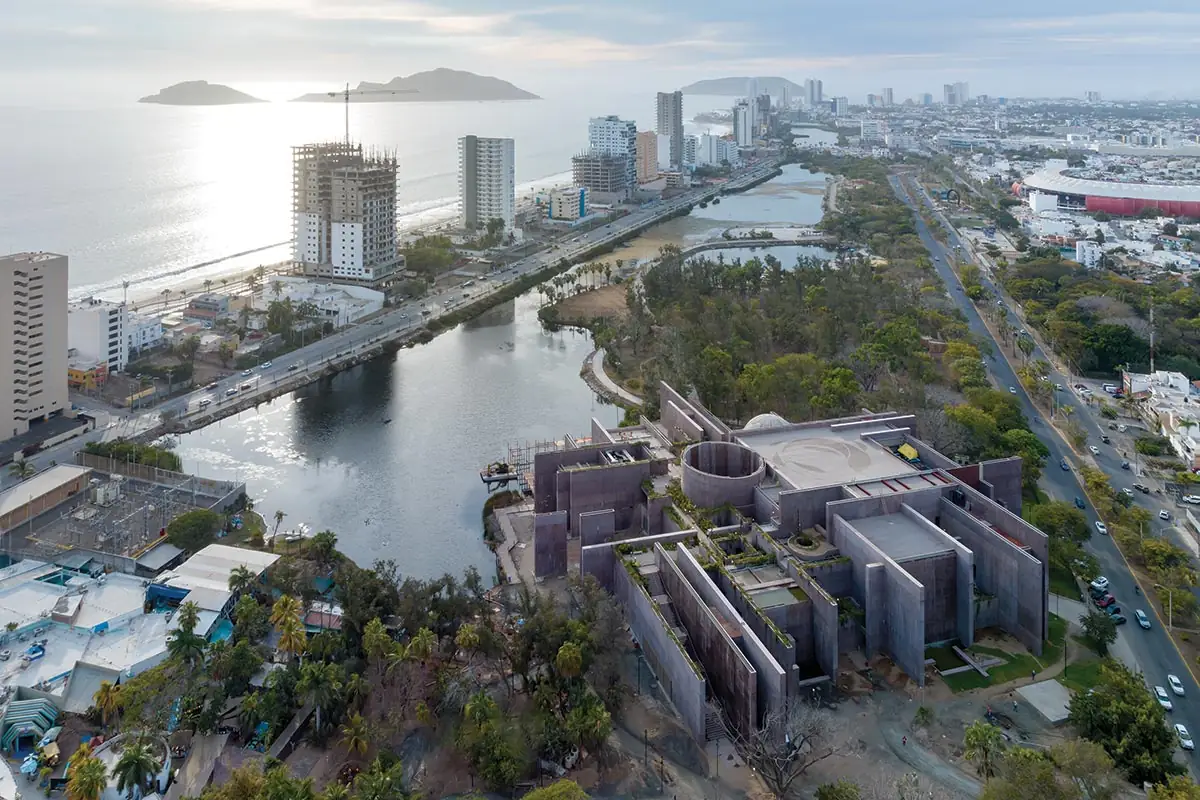
1
The aquarium’s cast-in-place concrete facades are tinted violet (1 & 2). Among its exhibits is a large coral tank (3). Photos © Iwan Baan, click to enlarge.
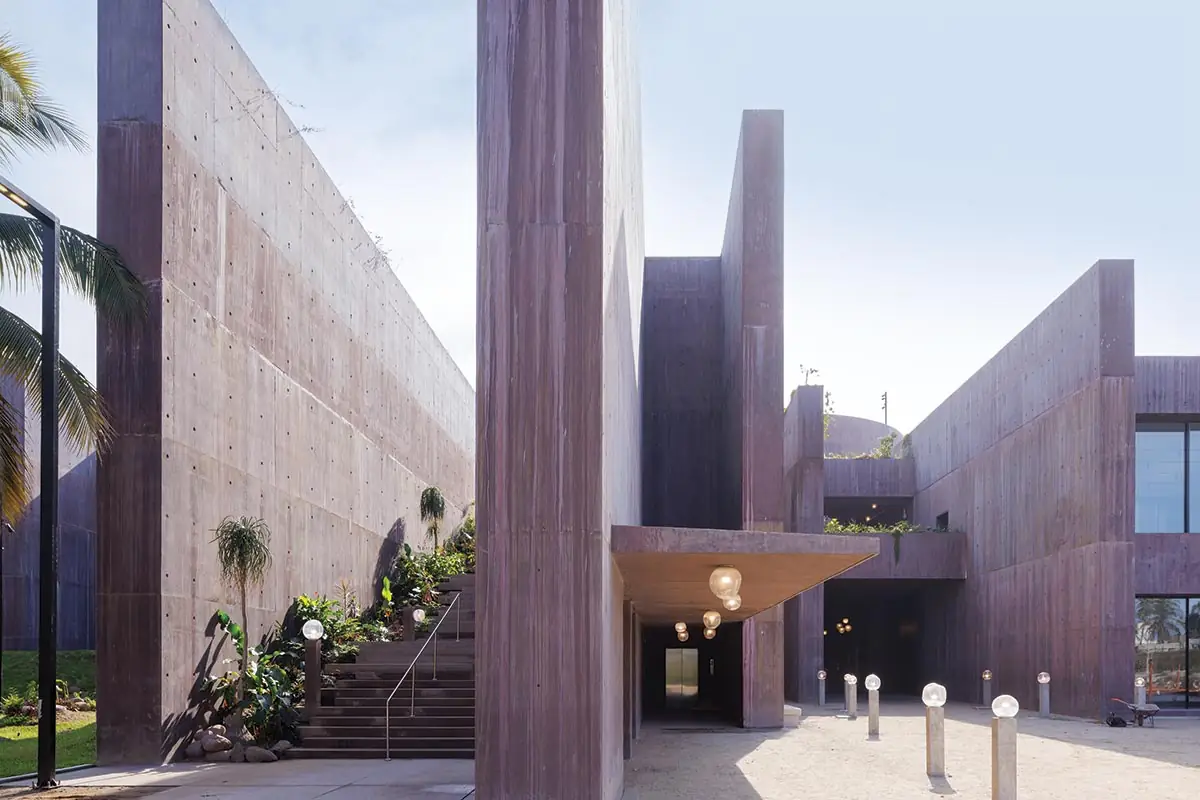
2
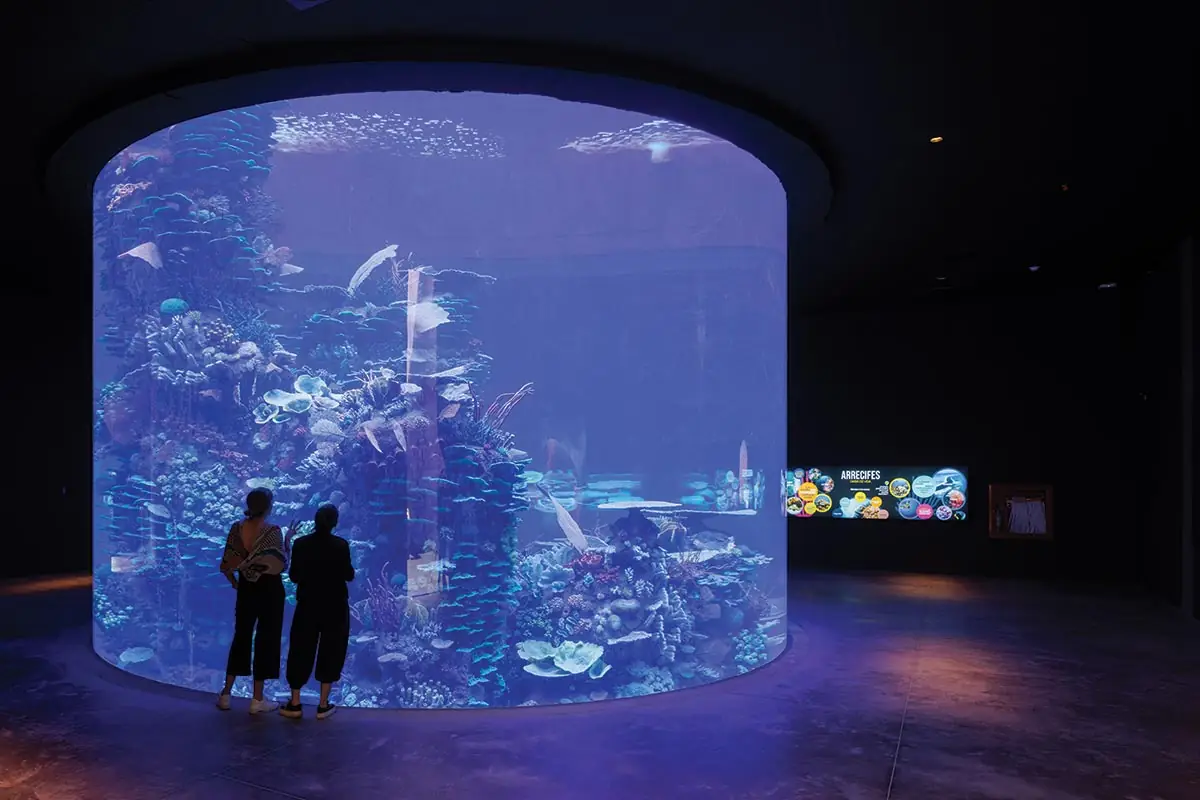
3
By August 2017, when the design process for the project began, Bilbao’s studio had already been working with Coppel and the city of Mazatlán for over two years to rehabilitate a 75.6-acre green area known as the Parque Central, just inland from the city’s bustling seaside promenade, or malecón. The new aquarium was conceived as the southern anchor for the park, whose permeable landscape, organized around a restored retention pond, emphasized cycles of rain and drought by allowing water levels to rise and retreat throughout the year. The traditional model for aquariums—including a prior one in Mazatlán, now closed, that was popular for its penguins and sea lion shows—involves importing species from around the globe. But Bilbao and her clients wanted to dedicate the new aquarium to the Sea of Cortez, which begins a short distance north of Mazatlán and was famously described by the marine biologist Jacques-Yves Cousteau as “the world’s aquarium.”
The aquarium is divided into three major habitats—land, coast, and sea—along with a set of laboratories that makes use of the tanks and their inhabitants for research, which the executive director, Rafael Lizárraga, describes as “the reason for this aquarium to exist.” Funding for the project, initially estimated at around $70 million, was to be split between state and private sources. Five years and one pandemic later, costs have ballooned by 50 percent, though the increase has been shouldered by the developer, Coppel Kelly, rather than the state.
Bilbao’s building consists largely of vertical concrete slabs of varying heights—the tallest rises 74 feet—intersecting at right angles, like an extruded De Stijl canvas, and oriented to capture cool breezes off the sea. In plan, the 186,000-square-foot building resembles a newly uncovered archaeological site; Bilbao describes it as “a ruin that we’ve occupied.” In person, and particularly from the quiet lagoon-front road that offers the only wide-angle view of the structure, its high, windowless walls give the impression of an abandoned sea fort, austere and impenetrable, despite the nascent greenery and sheets of water that pour out of troughs cut into their upper edges. A pair of imposing stairwells, their concrete treads already half consumed by vegetation, ascend the structure on opposite sides and open onto a habitable roofscape planted with endemic grasses and ferns, meant to function as an extension of the surrounding park. (The landscapes were designed by Puebla-based Entorno.) Another stairwell leads down into the aquarium’s open central rotunda, which is planted with a young ceiba tree that will eventually form a towering canopy over a churning pool in the tradition of Isamu Noguchi’s celebrated fountain at the Camino Real Hotel in Mexico City.
From there, an open floor plan distributes foot traffic among the exhibits, allowing visitors to submerge themselves gradually in displays on tidal pools and mangroves or to plunge immediately into cool, dark rooms populated with sharks and coral. Grouped together on the second floor, the display areas and tanks are joined by transitional vestibules, many of them undefined envelopes open to the sky. Offices and support systems are clustered on the lower level; throughout, raw concrete tinted a shade of violet (in reference to the rocky islands that dot Mazatlán’s shoreline) provides visual and textural unity.
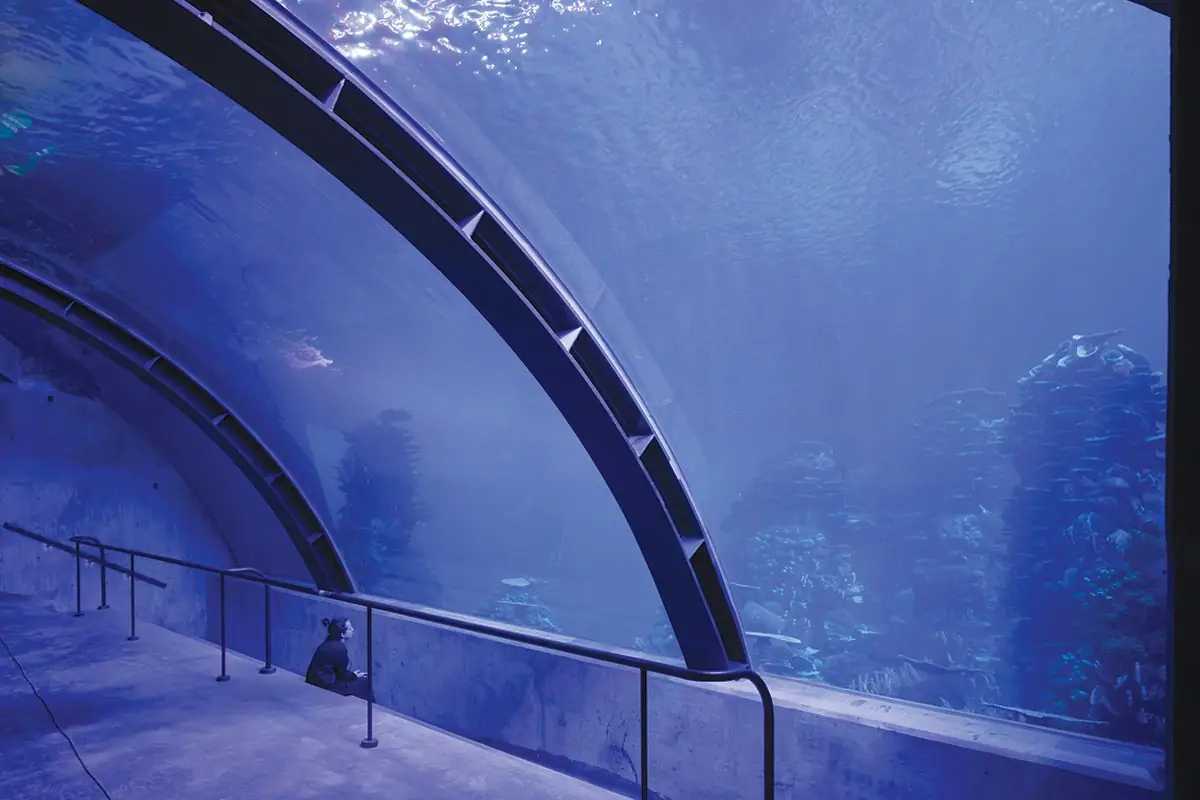
4
Exhibits bring visitors face-to-face with undersea life (4 & 5). Photos © Iwan Baan
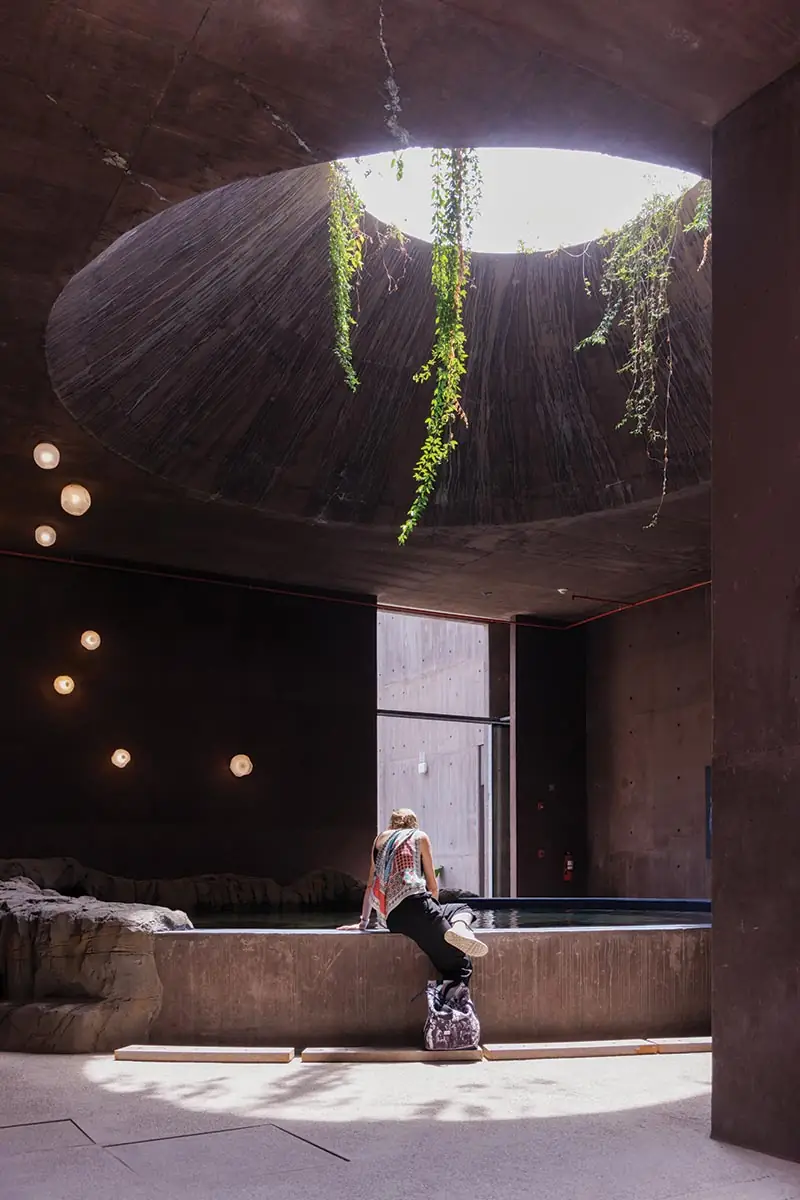
5
Despite its impressive scale, the building is surprisingly discreet, at least compared to the phalanx of towers that separates it from the sea, the result of a boom in tourism and rampant real-estate speculation that has transformed Mazatlán over the last decade. While Bilbao and the aquarium’s staff hope locals will embrace the aquarium, the Mazatlán-based advocacy group Acciones Colectivas de Sinaloa argues that high ticket prices (starting at roughly $14 for local children) and the concession of public land to a private institution are causes for concern. Developed in part as a means of extending the city’s tourism offerings beyond the traditional pastimes of sun, sand, and seafood, the aquarium has, since its opening on May 6, become an attraction for vacationing families, drawing more than 5,000 visitors on its busiest day; at the time of writing, only 12 percent of attendees have been locals. And though the displays feel sparse for now, visitors seem genuinely awed as they stroke the backs of mantas and take selfies beneath a crashing-wave simulator, where water rushes over a curved acrylic canopy.
“We wanted to avoid any kind of division between people, water, and vegetation,” says Soledad Rodríguez, a partner in Bilbao’s studio, and the building is at its best when it realizes this aim: on one of the outdoor stairwells, for instance, where children slip their hands into the skein of cool water that rushes down a soaring concrete wall; around the manta pool, where vines dangle through an oculus overhead; in a lab where visitors glimpse the elaborate infrastructure that occupies 60 percent of the building’s floor space; and in interstitial spaces where free-form glass lanterns designed by Mexico City–based Lightchitects Studio climb walls and hang from ceilings like jellyfish suspended in a gentle tide.
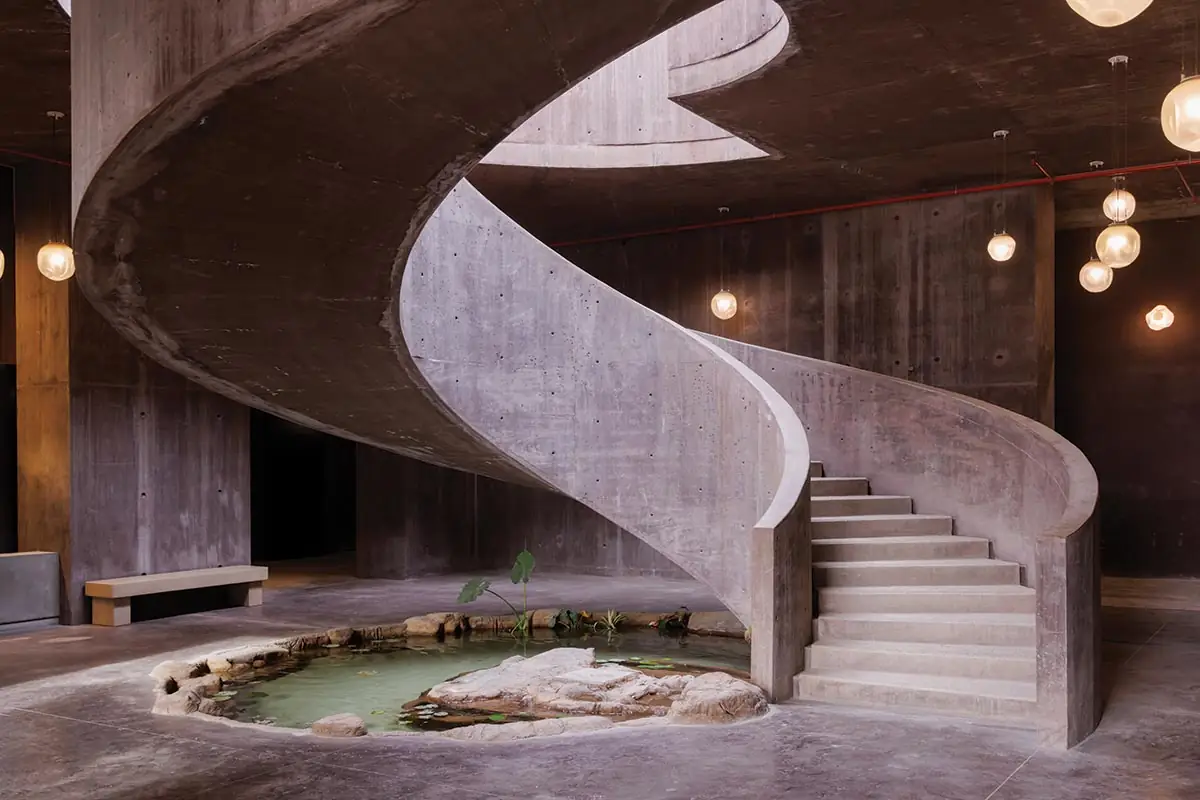
6
Circulation and gathering spaces are open to the elements (6 & 7). Photos © Iwan Baan
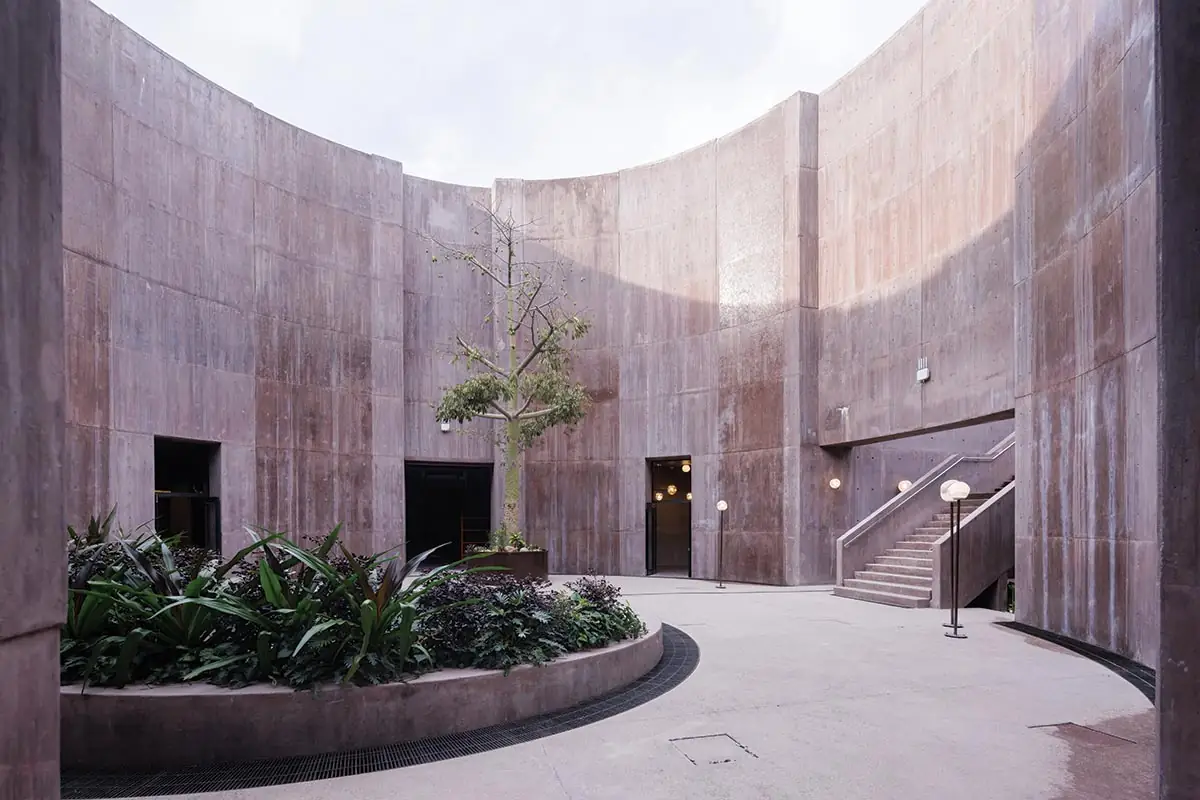
7
Yet the aquarium’s popularity has also disrupted key elements of Bilbao’s design. Belted crowd-control stanchions like those used in airports currently traverse the building’s open floor plan, imposing distance between visitors and the acrylic tanks and forcing a predetermined circulation path. Contact with the building and the animals is all well and good, says Lizárraga, “but every fingerprint represents an operational cost.” Meanwhile, the tendency to tap on the tanks can stress the animals and undermine the integrity of behavioral studies. And, while Bilbao’s original, exploratory floor plan was exciting in theory, Lizárraga and other members of the operations team argue that it proved impracticable, particularly on busy days, when crisscrossing foot traffic created bottlenecks. Still more stanchions currently limit access to most of the habitable roof (these, Lizárraga says, are temporary), while, outside, a chain-link fence cuts the building off from the Parque Central, though the aquarium’s project director, Guillermo Zerecero Velo, hopes that the municipal government will eventually remove that barrier.
Bilbao’s studio also hopes these interventions will be temporary. But the operations team seems convinced that some version of the measures must remain in place for the aquarium to function, particularly given that children constitute much of its audience. This may reflect a failure of operational imagination, or a lack of trust in the public. It seems equally plausible, though, that Bilbao’s free-flowing layout, though rhetorically powerful, was never an optimal design solution for a project that would have to draw such significant crowds. Flexibility is an important and compelling aim for contemporary architecture, but can an aquarium, however thoughtful the discourse around it, ever really renounce “control” as its central ethos?
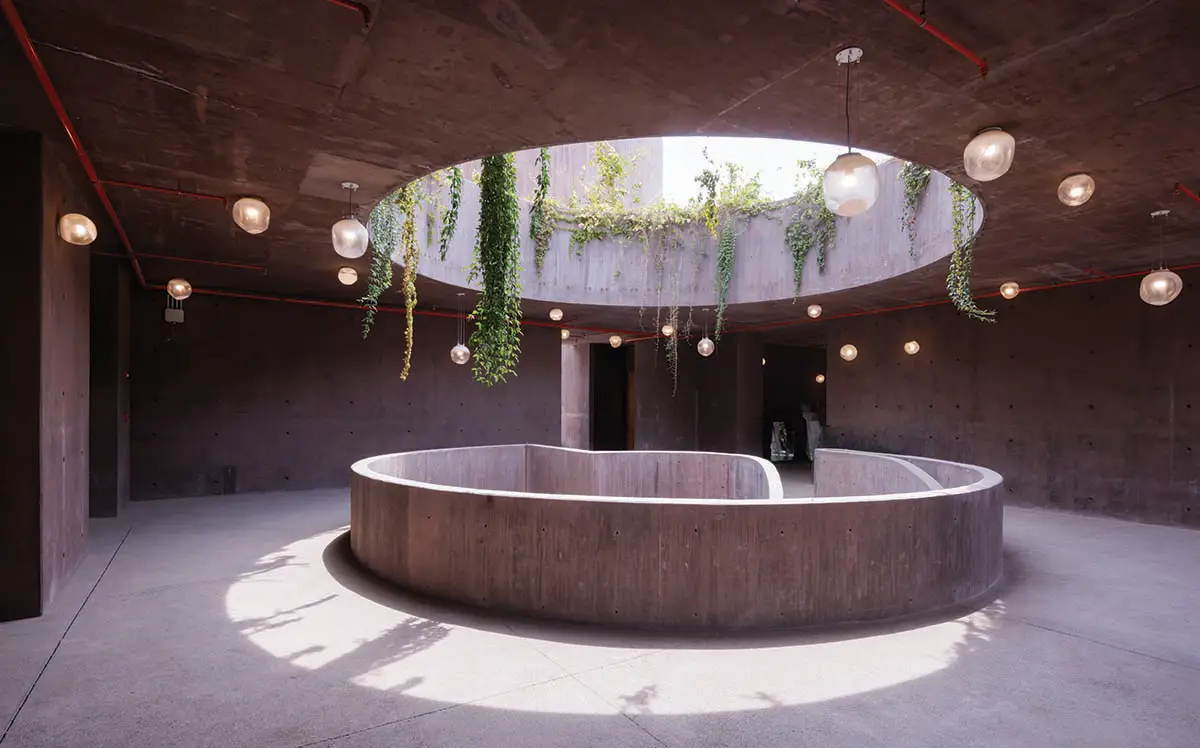
Photo © Iwan Baan
As with all public-facing buildings, it will take years to evaluate the aquarium’s success. It remains to be seen how the garden will grow in and consume the building’s stark walls; what kind of research will emerge from its labs; how many of these precautionary barriers will come down (or what new ones will go up to replace them); and to what extent the city will integrate the aquarium into its urban landscape and, more importantly, into the lives of its residents. Ideally, an aquarium inspires fascination with an alien world and even, with luck, engenders a richer understanding of our complex entanglements with the ecosystems that surround us. “Kids come in and they’re mesmerized, which is an amazing thing in this age of screens,” says marine biologist Catherine Hart, coordinator of the sea turtle program for the Oceanic Research Center of the Mar de Cortés, the independent scientific institution working out of the aquarium. “If we can get them to leave with just one or two new pieces of information, then we’ve won.”
Click plans to enlarge
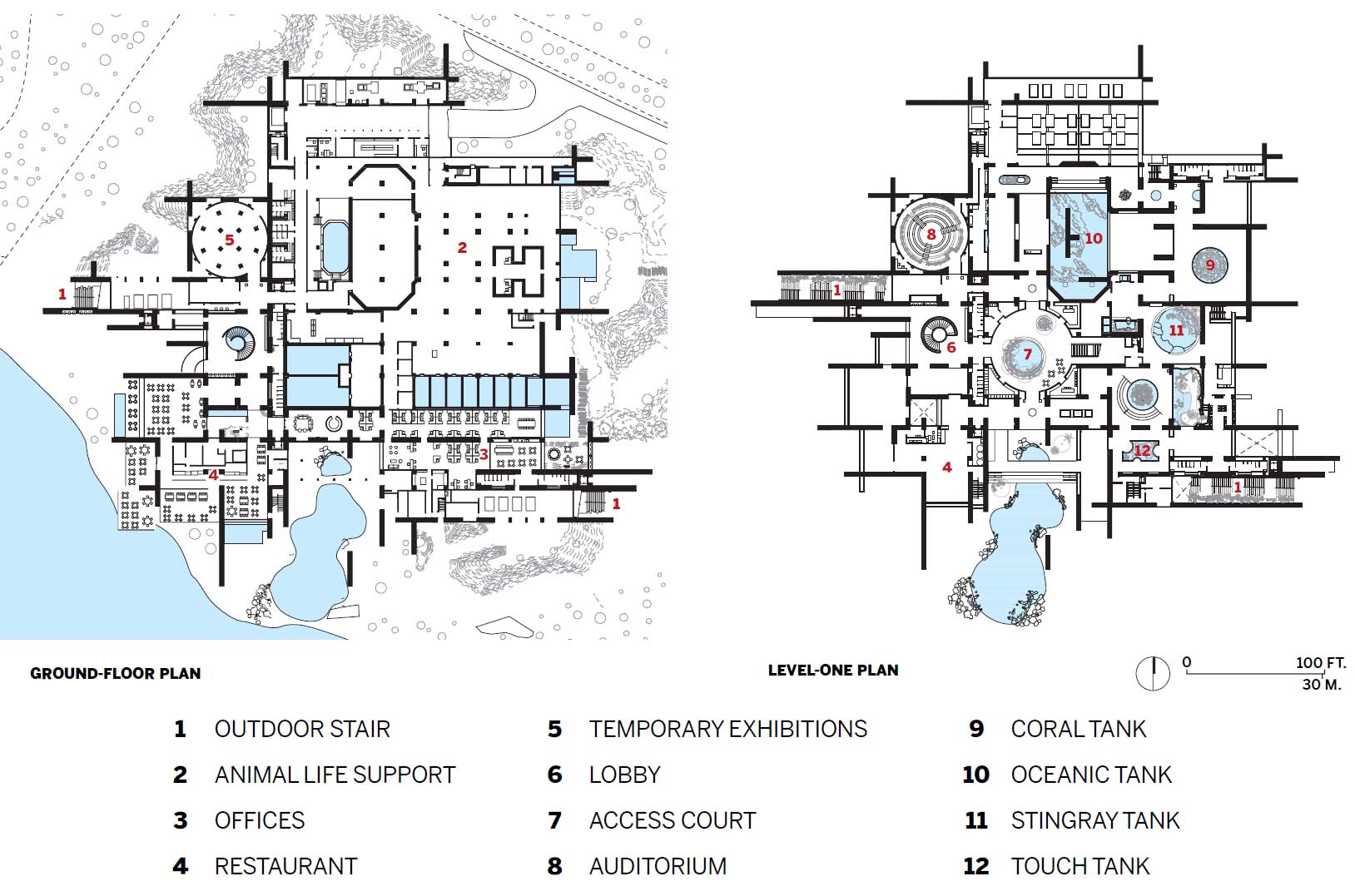
Credits
Architect:
Tatiana Bilbao ESTUDIO — Tatiana Bilbao, principal; Catia Bilbao, Juan Pablo Benlliure, Alba Cortés, Mariano Castillo, Soledad Rodríguez, partners; Udayan Mazumdar, Alba Cortés, project directors
Structural engineer:
SENER
Aquarium engineers:
TPJ, MAT
Consultants:
Liquen, Space Haus, Ocean Wise, Guillermo Roel
General contractor:
Kingu Mexicana
Construction management:
Axioma
Landscape design:
Entorno Taller de Paisaje
Lighting design:
Lightchitects Studio
Client:
Fideicomiso Acuario Mazatlán
Size:
186,000 square feet
Cost:
$100 million
Completion Date:
May 2023
Sources
Windows:
Panoramah!
Doors:
Panoramah! (sliding doors); Doorlock (special doors)
Elevators:
Mitsubishi
Lighting:
Toljy




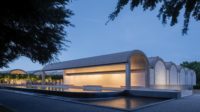
Post a comment to this article
Report Abusive Comment